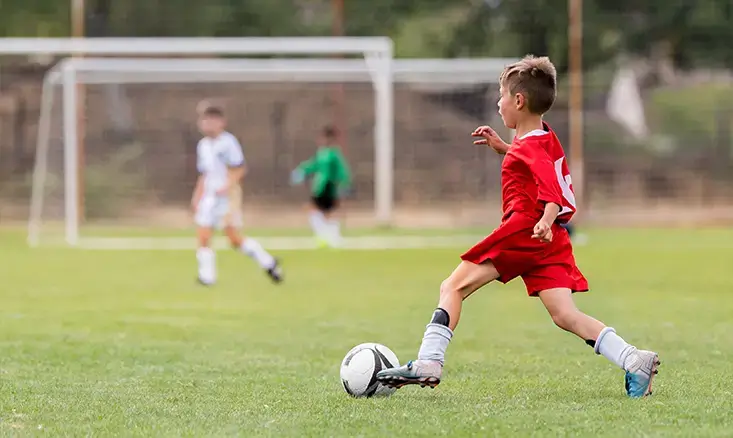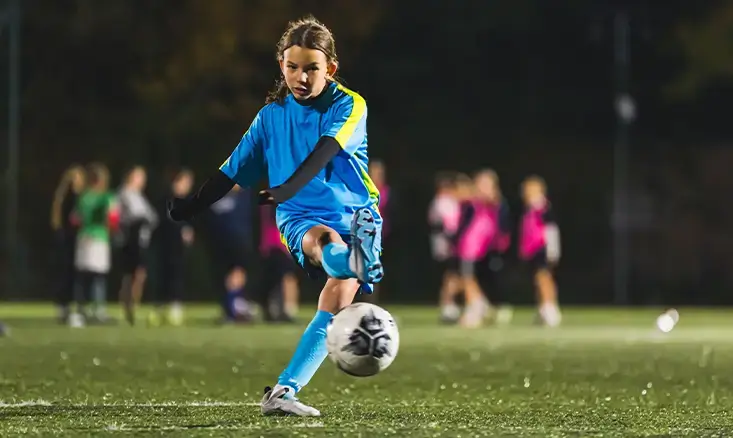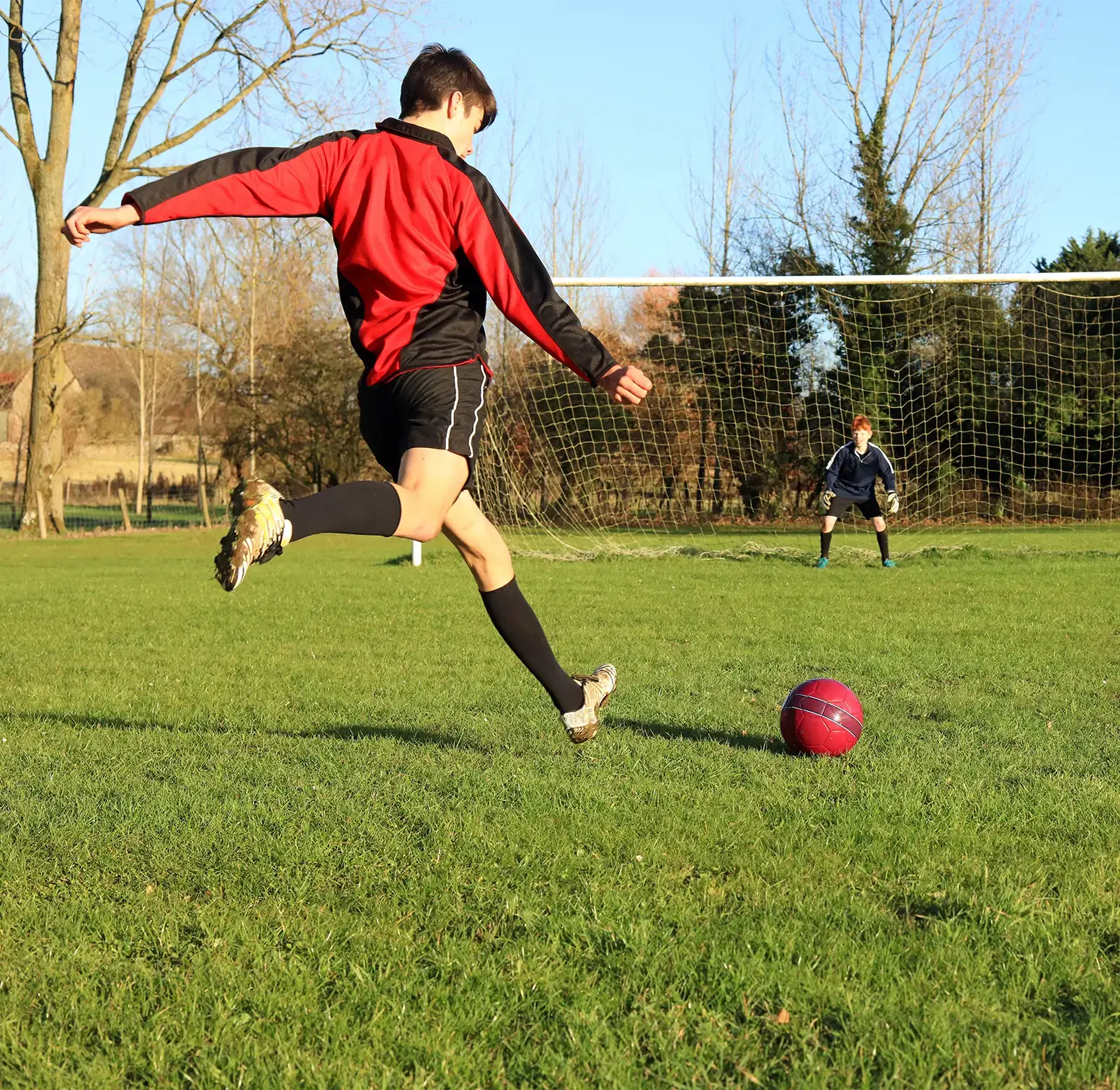CRFC BLOGS
LATEST BLOGS & NEWSLETTERS
Understanding When and Why a Penalty Kick Is Awarded in Soccer
A penalty kick is one of the most intense moments in soccer, often deciding the outcome of a match. But when exactly is a penalty kick awarded, and why? Whether you’re a parent, a coach, or a young player, understanding the science behind these crucial moments is essential for mastering the game. In this article, we’ll break down everything you need to know about penalty kicks, from the reasons they are awarded to how they are executed.
What is a Penalty Kick?
A penalty kick occurs when a player commits a foul inside their own team’s penalty area. This results in the opposing team being awarded a direct shot on goal from the penalty spot. The shot is taken with only the goalkeeper defending the goal, making it a high-pressure moment for both the shooter and the goalkeeper. The penalty kick is typically taken from 12 yards away from the goal, offering a clear opportunity for scoring.
When is a Penalty Kick Awarded?
Penalty kicks are awarded for certain types of fouls that occur within the penalty area. These fouls include:
- Tripping: If a player is tripped by an opponent inside the penalty area, a penalty is awarded.
- Handball: If a player deliberately handles the ball in their penalty area (other than the goalkeeper), a penalty is given.
- Holding or Pulling: Holding an opponent’s shirt or obstructing their movement in a way that prevents them from playing the ball results in a penalty.
- Dangerous Play: Any tackle that puts the opponent at risk of injury, such as a reckless challenge or a high boot, can lead to a penalty kick.

How Does a Penalty Kick Work?
When a penalty kick is awarded, the fouled team is granted the opportunity to shoot from the penalty spot. Here’s how the process works:
- The penalty taker must place the ball at the penalty spot, which is located 12 yards from the goal line.
- The goalkeeper must remain on the goal line until the ball is kicked, although they can move sideways along the line.
- The other players must remain outside the penalty area until the kick is taken.
If the ball goes into the net, it counts as a goal. If the goalkeeper saves the shot or the ball misses the goal entirely, play continues as usual.
Why Are Penalty Kicks So Important?
Penalty kicks are often the difference between winning and losing. Here’s why they carry so much weight in a match:
- High Probability of Scoring: With only the goalkeeper to beat, the odds of scoring are high, making it a critical moment in the game.
- Game-Changing Moment: A successful penalty can break a tie, seal a victory, or keep a team in the game.
- Mental and Physical Challenge: The pressure of a penalty kick tests the mental strength and composure of both the shooter and the goalkeeper, making it a fascinating aspect of the game.

The Role of the Goalkeeper in a Penalty Kick
The goalkeeper plays a crucial role in defending against a penalty kick. To successfully defend, the goalkeeper must:
- Wait for the kick: The goalkeeper cannot move off the goal line before the ball is kicked. If they do, the referee can call for a retake of the penalty.
- Stay focused: A goalkeeper needs to remain calm, analyze the shooter’s movements, and react quickly once the ball is kicked.
Goalkeepers also use techniques like diving to their left or right or staying still to attempt to stop the shot. Timing and anticipation are key to their success.
How Players Can Prepare to Take a Penalty Kick
Taking a penalty kick is a high-pressure task. Here are a few tips for players to prepare:
- Stay Calm: Focus on the ball, not the crowd or the goalkeeper. Composure is critical for success.
- Pick a Spot: Before taking the kick, decide where you will place the ball (corner, center, etc.). Try not to change your mind at the last second.
- Shoot with Accuracy: It’s more important to place the ball accurately than to kick it with maximum power. A well-placed shot is harder for the goalkeeper to save.

The Impact of Penalty Shootouts
In certain situations, a penalty kick may lead to a penalty shootout. If a match ends in a tie, especially in knockout rounds or tournaments, the game may be decided through a series of penalty kicks. Here’s how a typical shootout works:
- Five Rounds: Each team alternates taking one penalty kick at a time, for a total of five shots per team.
- Sudden Death: If the score is still tied after five rounds, the shootout enters a sudden-death phase, where each team takes one shot until one team scores and the other misses.
- Team Strategy: Teams often choose their best penalty takers to maximize the chances of scoring.
Penalty Kicks in Youth Soccer
In youth soccer, the rules for penalty kicks are largely similar to those in professional soccer but adjusted for younger players. For example:
- The penalty spot may be closer to the goal for younger players (usually 10 yards instead of the standard 12).
- Some youth leagues may use penalty shootouts to settle tied games, while others may have different methods, such as overtime.
Understanding these specific adjustments ensures fairness and makes the game more enjoyable for younger players.

Conclusion
Penalty kicks are given for fouls that happen inside the penalty area. The goalkeeper is the only player who can stop the kick. They must stay on the goal line until the ball is kicked.
In tied matches, penalty shootouts may be used to decide the winner. Both the shooter and the goalkeeper play key roles in these high-pressure situations.
To score a successful penalty kick, players should stay calm. Focus on accuracy and be ready for the moment.
FAQs
What is a penalty kick in soccer?
A penalty kick is awarded when a defending player commits a foul inside their own penalty area. The attacking team gets one shot from the penalty spot, with only the goalkeeper defending the goal.
When is a penalty kick awarded?
A penalty kick is awarded when a player commits a foul, such as tripping, holding, or handling the ball inside their penalty area.
What happens if the goalkeeper moves off the line before the penalty kick is taken?
If the goalkeeper moves off the goal line before the ball is kicked, the penalty may be retaken.
How does a penalty shootout work in soccer?
In a penalty shootout, each team takes five shots. If the score is still tied after five rounds, the shootout enters sudden death, where each team takes one shot until a winner is determined.
Can a player take a penalty kick more than once?
No, a player only gets one shot to take a penalty kick. If the ball is saved or missed, the game continues as normal.
What if the ball rebounds after hitting the post during a penalty kick?
If the ball rebounds off the post or crossbar, play continues. The shooter or any other player can attempt to score on the rebound.
What happens if the match is still tied after a penalty shootout?
If the match is still tied after each team has taken five penalty shots, the game enters a sudden-death shootout, where teams alternate taking one shot until one team scores and the other misses, determining the winner.

Did you find this useful?


